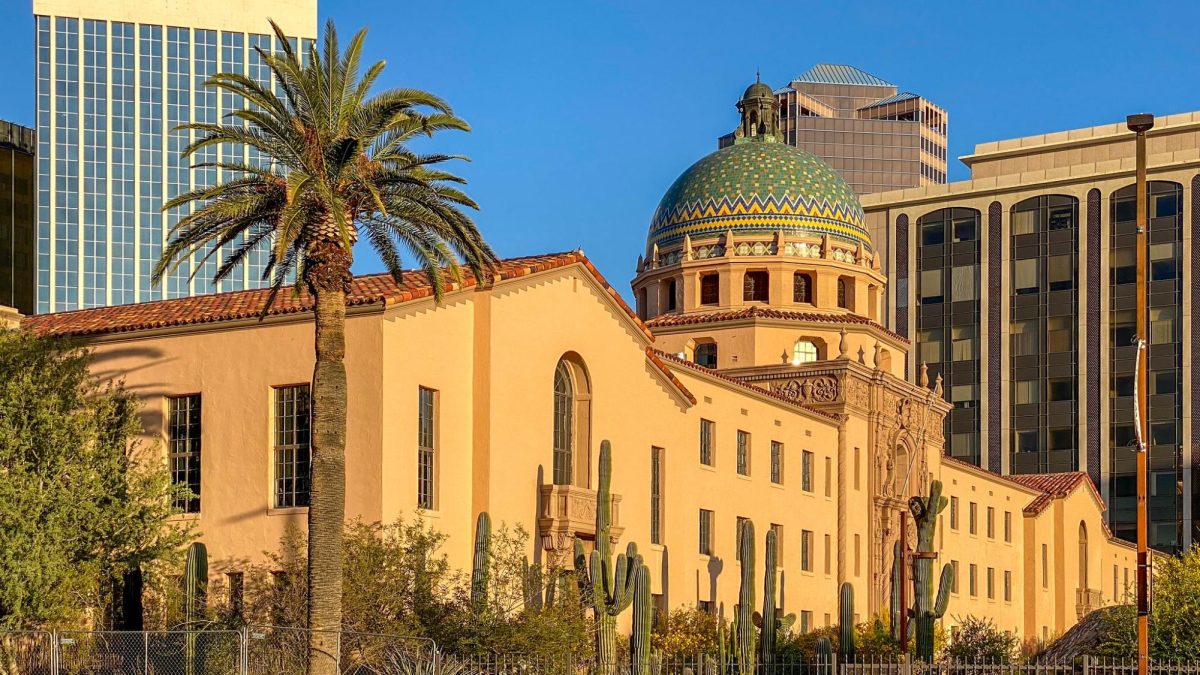UA President Ann Weaver Hart emphasized increasing accessibility to the UA and community involvement during the Arizona Board of Regents’ meeting Friday morning.
Hart began her report on the UA’s Academic Strategic Plan’s progress in the last three months by praising the Strategic Planning Budget Advisory Committee. Hart said having the committee in place already allowed her to immediately begin developing the strategic plan.
“So what we’re working on now is to make sure that all of that great work gets integrated and focused,” Hart said.
Hart assured the board that an integrated complete strategic plan would be presented in the spring.
So far, Hart said, the committee has worked on elevating interdisciplinary collaborations and improving access and inclusion through surveys asking students, faculty and staff for feedback. Expanding global connections is also part of Hart’s strategic plan.
Hart also stressed the UA’s intent to find new sources of revenue while still capitalizing on what the state provides. The UA also intends to improve medical education by collaborating with the federal and state governments as well as the UA’s medical enterprises.
“We can’t do it by talking about it and no one entity can do it,” Hart said. “We have to cut across our previous asylums and make sure we focus on achieving that goal.”
Hart went on to show the board how the university already gets involved in the community in most of its areas in education.
From students being involved in worldwide water and climate research to “100 percent of journalism students getting hands-on experience through internships before graduation,” Hart said showed student are integrated into the community.
Hart also touched on the importance of retention rates of freshman and graduation rates, rather than focusing solely on incoming freshmen.
“Our students need to be prepared to be successful. We do them no favors,” Hart said. “We need to focus … not just on who’s there freshman year.”
Hart pushed for increased accessibility for both high school and transfer students from community colleges through outreach programs, such as the College Academy for Parents, a program that teaches parents about how college works.
“We could do these things to contribute to college readiness,” Hart said. “What we find is how many parents who have never been to college … sign off that slip without really thinking about the door that’s being pushed behind their kid when their kid’s on the way out.”
Although the UA is ranked No. 19 in research among public universities, Hart said there is still room for improvement. Hart identified the UA’s research goal to double to $1.2 billion by 2020. To reach that, Hart said the UA needs to build on the university’s current strengths, recruit distinguished faculty and invest in research infrastructure.
“If we want to achieve our research expenditure goals we’ve got to invest in our infrastructure where that will take place,” Hart said.
Hart then turned the microphone over to Mary M. Poulton, director of Lowell Institute for Mineral Resources. The institute, according to Hart, exemplifies the type of integration she hopes to see in all departments of the university after the strategic plan is implemented.
The 125-year-old institute is known worldwide for its mining and students have worked with many private sectors and in many different countries, most notably Latin America.
Industry experts teach many of the courses in the department. The students also get hands on work in a mine under San Xavier Mission.
“A lot of our students work with faculty on research,” Poulton said. “Our seniors have a capstone design experience where they have to do a real world engineering project.”
Regent Anne Mariucci remarked that the plan was bound to face some challenges.
“I suspect with all the aspirations that you point out,” Mariucci said, “you will quickly find that the resource requirements are absolutely staggering.
“Are we trying to do too much? Are we so driven by this model that’s all about growth that we aren’t as focused on being good?” Mariucci asked.
Rick Myers, the board’s chair, said Mariucci raised a good point. Universities and the board need to be self-critical and make decisions based on the reality.
“I would just like to see us open ourselves back up to those discussions and evaluations,” Hart responded.








